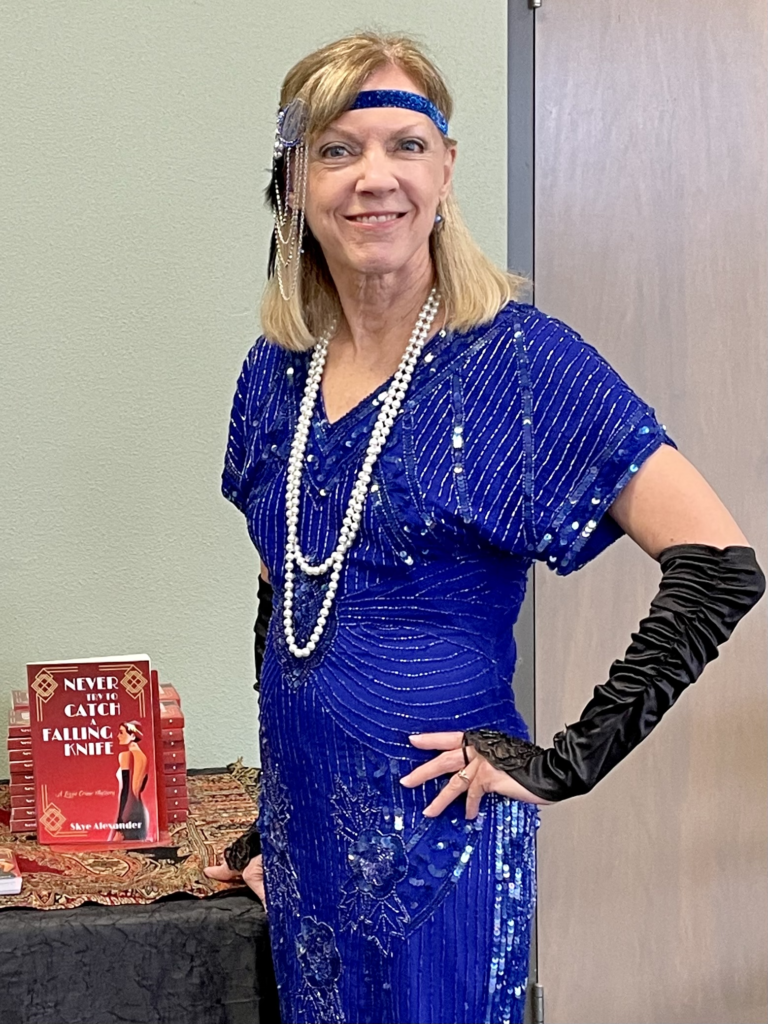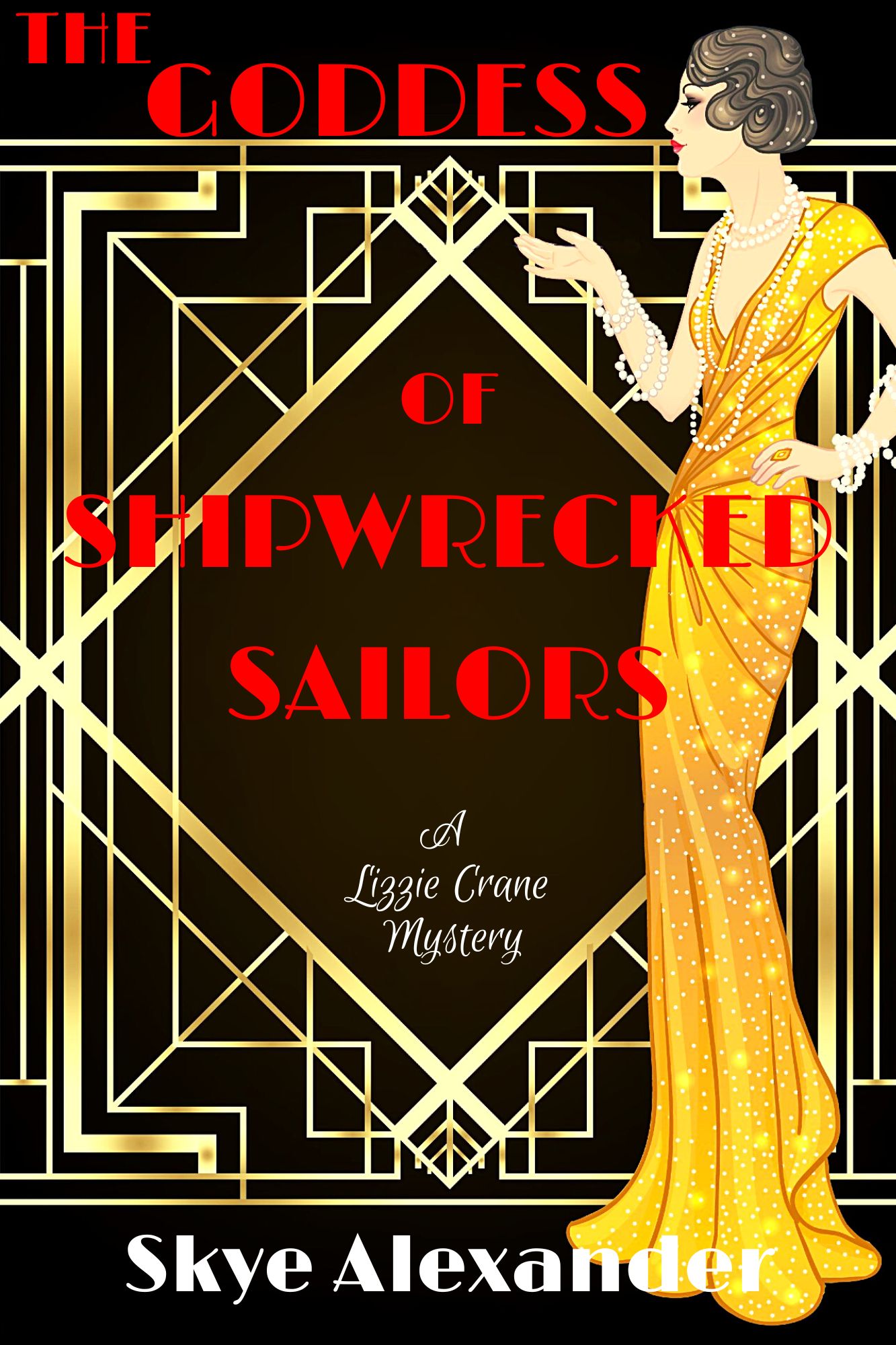Novel Magic: Why We Love Mysteries

Mysteries and thrillers, according to Tonerbuzz.com, accounted for nearly $730 million dollars’ worth of sales in 2022--second only to the mammoth $1.44 billion (that's billion with a b) that Romance brought down. So there's gold in them thar murders. In this week's Novel Magic, Author Skye Alexander explores the reasons we love (and spend our money) on tales of Mystery.
Why We Love Mysteries
by Skye Alexander
It’s generally believed that the world of modern mystery fiction began with Edgar Allen Poe’s detective story “The Murders in the Rue Morgue,” published in Graham’s Magazine in April 1841––and we readers have been been hooked ever since. Year after year, mysteries finish at the top of the bestsellers in the fiction field, second only to romance novels.
The Appeal of Mysteries
Why do we love mysteries? One reason is mysteries are puzzles, elaborate games writers play with their readers. Mysteries invite us to escape from our everyday routines and come along on a journey full of twists and turns, surprises, and satisfying solutions. Some mysteries resemble jigsaw puzzles, in which each clue elicits an “aha” and reveals a bit more of the slowly developing picture. Others have more in common with adventure video games, full of action, danger, and suspense.
Another reason is because mysteries are modern-day morality tales, in which problems get sorted out in the end and the bad guys get their comeuppances. We can take comfort in knowing that justice will prevail and that good will triumph over evil––which isn’t always the case in everyday life.
Finally, mysteries are modern-day versions of the hero/ine’s journey into the dark, frightening, unknown realms. The protagonist has to go through all sorts of trials and conflicts in order to figure out what’s going on and solve the mystery. As in the old myths, s/he faces demons in the outer world and in her/himself. In the process, s/he finds out what s/he’s made of and emerges the victor.
Different Types of Mysteries
What makes it a mystery? In simple terms, a crime has been committed and someone––usually a police officer, private investigator, or amateur sleuth––is trying to figure out whodunit. Writers, however, have devised numerous ways to accomplish that end. As a result, mysteries come in many flavors. Here’s a list of fifteen subgenres, although I’m sure I’ve missed some. Often these categories overlap, for example a detective story may exude a noir ambiance or a tale of romantic suspense may be set in a bygone era.
- Caper
- Cozy
- Domestic
- Investigator or detective
- Thriller
- Noir
- Historical
- Procedural (police or legal)
- Hardboiled
- Softboiled
- Paranormal
- Suspense
- Romantic suspense
- Espionage
- True crime (nonfiction)
Each category is defined by what it includes and excludes.
Cozies, for instance, avoid graphic sex, coarse language, and grisly violence––yes, someone gets killed, but the author doesn’t give you a play-by-play of the gory details. Within this basic framework you’ll find domestic cozies offering recipes or quilting patterns, animal sleuths, and maybe some sweet (but tame) romance. Tales of suspense may be presented as police procedurals, espionage thrillers, psychological intrigues, courtroom dramas, or even paranormal adventures.
Over time, as society changed, so did the mystery novel’s characters, plots, and possibilities. A hundred years ago, for instance, you’d be unlikely to find a young mother as the story’s murderer. Female cops were rare (although the NYPD did have its “flapper squad”) in real life and in crime fiction. New weapons, drugs, and technological developments have provided writers with ways to kill their victims that our forebears didn’t have. Likewise, forensic advances have enabled police to solve crimes using methods unknown to them previously.
Although the 1920s and 1930s are often considered the “golden age of mysteries,” today’s crime writers have expanded the territory and taken us to new places our predecessors couldn’t have imagined. Yet even though contemporary mystery authors may build suspense via emails or texts, use cellphones and computers to incriminate perps, and rely on voice recognition software or iris scans to identify criminals, the fundamentals of a good story remain the same even after all these years.
Meet Skye Alexander
Skye Alexander is the author of nearly 50 fiction and nonfiction books. Her stories have appeared in anthologies internationally, and her work has been translated in more than a dozen languages. In 2003, she cofounded Level Best Books with fellow crime writers Kate Flora and Susan Oleksiw. The first novel in Skye’s Lizzie Crane mystery series, Never Try to Catch a Falling Knife, set in 1925, was published in August 2021; the second, What the Walls Know, was released in November 2022; the third, The Goddess of Shipwrecked Sailors, launched in September 2023. After living in Massachusetts for thirty-one years, Skye now makes her home in Texas with her black Manx cat Zoe.

Grab your Copy of Skye's Latest Book

December 1925: Salem, Massachusetts
When Matthew Gardner, the heir to a shipping fortune, hires New York jazz singer Lizzie Crane and her band to perform during the Christmas holidays, she has high hopes that this prestigious event will foster their career and bring them riches and recognition. She’s also eager to reconnect with a handsome man from one of Boston’s most esteemed families, whom she met at an earlier visit to Massachusetts.
But the evening the musicians arrive in historic Salem to begin their engagement, police discover the body of a man near a tavern owned by Lizzie’s cousin––a cousin she even didn’t know she had until Christmas Eve. In the dead man’s pocket is a cryptic letter addressed to Gardner. To compound her dismay, she also learns that her host plans to marry his daughter to the man Lizzie wants for herself.
Soon Lizzie’s caught in the middle of a high-stakes feud between her cousin and her employer over a mysterious lady. When she digs deeper into their conflict, she discovers its roots are deep and bitter: her cousin’s father crewed on one of Gardner’s grandfather’s ships that sunk during a storm in 1868. As she struggles to piece together the puzzle and find the lady at its center, Lizzie becomes a pawn in each man’s deadly game for money and revenge.
Comments
Post a Comment
What do you think?